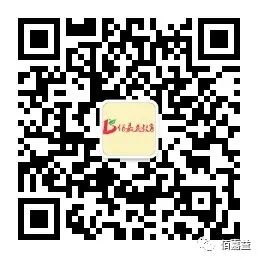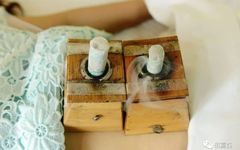The methods of acupuncture treatment are a comprehensive embodiment of principles, techniques, points, formulas, and skills. In summary, there are eight methods: sweating, vomiting, purging, lifting, warming, clearing, resolving, and tonifying.
1. Sweating Method
The sweating method aims to achieve the purpose of relieving the exterior by inducing sweating. It is mainly used for external pathogenic heat that is constrained in the muscle layer, leading to wind-cold or wind-heat colds, with symptoms such as aversion to cold, fever, headache, body aches, absence of sweating, and a floating tight pulse indicative of exterior excess. The treatment should induce sweating and relieve the exterior, using points such as Dazhui (Da Zhui), Shenzhu (Shen Zhu), Fengchi (Feng Chi), Fengmen (Feng Men), Feishu (Fei Shu), Hegu (He Gu), Lieque (Lie Que), and Houxi (Hou Xi). Both acupuncture and moxibustion can be used, with a focus on purging.
2. Vomiting Method
The vomiting method aims to clear the stomach and intestines and regulate the qi of the bowels through inducing vomiting. It is mainly used to treat food stagnation or food poisoning. Points such as Tiantu (Tian Tu), Shanzhong (Shan Zhong), Zhongwan (Zhong Wan), Hegu (He Gu), Neiguan (Nei Guan, strong stimulation), Fenglong (Feng Long), and Zusanli (Zu San Li) can be used. Only acupuncture is applied, focusing on purging.
3. Purging Method
The purging method aims to regulate the qi of the bowels through purging. It is mainly used to treat gastrointestinal stagnation, constipation, abdominal pain with resistance to pressure, a red tongue with a yellow dry coating, and a deep, strong pulse indicative of interior excess. Points such as Hegu (He Gu), Quchi (Qu Chi), Tianshu (Tian Shu), Dachangshu (Da Chang Shu), Fenglong (Feng Long), and Zusanli (Zu San Li) can be used. Only acupuncture is applied (shallow or oblique needling at abdominal points), focusing on purging.
4. Lifting Method
The lifting method utilizes acupuncture to tonify the middle qi and lift the sinking yang. It is mainly used to treat dizziness and vertigo caused by the failure of clear yang to rise and conditions of qi deficiency leading to sinking, such as chronic diarrhea, dysentery, and organ prolapse. As stated in the “Lingshu: Functions,” “When the upper qi is insufficient, push and lift it,” and in the “Suwen: Great Discussion on True Essentials,” “Lift what is sinking,” both refer to this method.
1. Tonifying qi and lifting yang—For dizziness and vertigo caused by the failure of clear yang to rise, as well as symptoms like forgetfulness and insomnia, points such as Qihai (Qi Hai), Guanyuan (Guan Yuan), Baihui (Bai Hui), Zusanli (Zu San Li), and Sanyinjiao (San Yin Jiao) are often used, with both acupuncture and moxibustion applied, focusing on tonifying.
2. Lifting yang and raising what is sinking—For conditions of qi deficiency leading to sinking, points such as Qihai (Qi Hai), Guanyuan (Guan Yuan), Zhongwan (Zhong Wan), Baihui (Bai Hui), Pishu (Pi Shu), Weishu (Wei Shu), and Zusanli (Zu San Li) are often used, with both acupuncture and moxibustion applied (with a focus on moxibustion), focusing on tonifying.
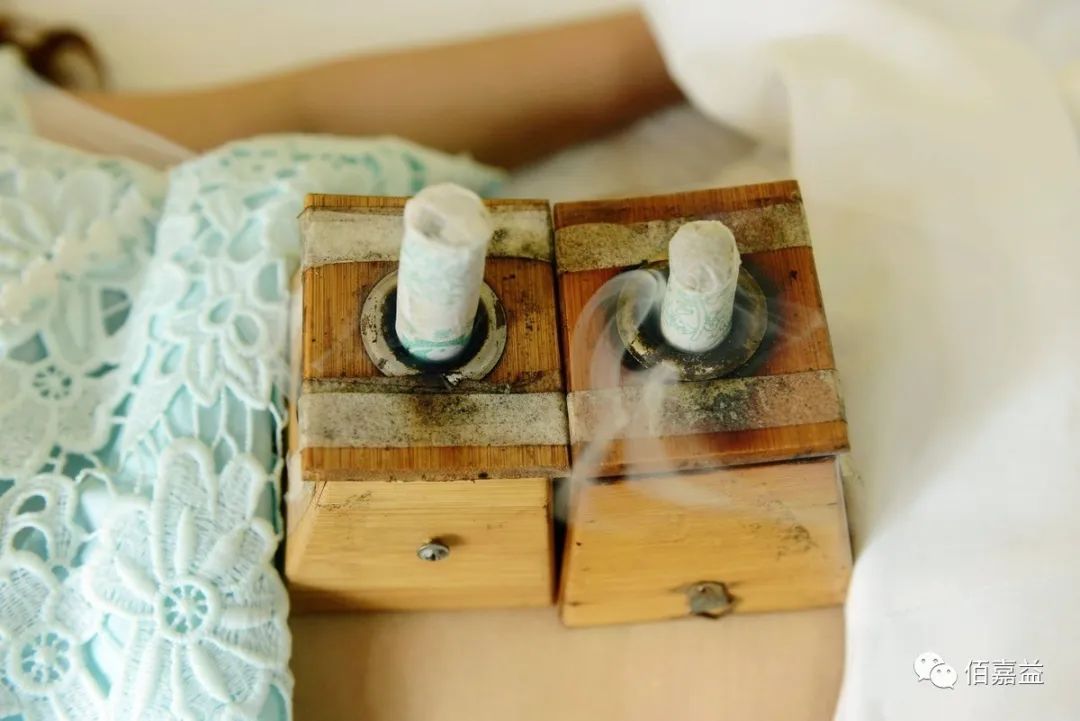 5. Warming Method
5. Warming Method
The warming method aims to warm the meridians or disperse cold through warming moxibustion. The “Lingshu: Meridians” states, “Cold should be retained.” The “Lingshu: Twelve Original Needles” further explains, “Needling cold and clearing it is like a person who does not want to move.” “Retain” refers to the meaning of retaining the needle, and “a person does not want to move” vividly describes that needling should be deep and retained for a long time. It indicates that the treatment principle for cold-type diseases is to needle deeply and retain the needle for a long time to achieve the purpose of warming the meridians and dispersing cold. Due to yang deficiency and excessive cold, it is difficult to obtain qi with needling, so the needle should be retained to await qi. Adding moxibustion further assists in dispersing cold. When yang qi is restored, the cold pathogen is dispersed. This method is mainly used to treat muscle or joint swelling and pain, paralysis of limbs, muscle atrophy, and internal cold conditions (such as lung cold cough and wheezing, stomach cold pain, intestinal rumbling and diarrhea, kidney yang deficiency leading to nocturnal enuresis, etc.). Points can be selected from painful muscles or joints or Ah Shi points corresponding to the affected organs or back-shu points. If the cold pathogen is on the exterior and retained in the meridians, moxibustion is most appropriate. If the cold pathogen is internal and stagnating in the organs, needling should be deep and retained for a long time, or combined with the “burning mountain fire” complex needling technique, or moxibustion should be added, with warming needling being the most suitable. Cold conditions can be classified into exterior cold, interior cold, and deficiency cold, and acupuncture treatment varies accordingly. The commonly used warming methods in clinical acupuncture include the following:
1. Warming and dispersing exterior cold—For exterior cold caused by wind-cold binding the lungs and the loss of the defensive qi, with symptoms of severe aversion to cold and mild fever, the tongue coating and pulse show cold signs. The treatment should warm and disperse exterior cold, using points on the Governor Vessel and the Foot Taiyang meridian, with needling to disperse, further assisted by moxibustion. For example, warming moxibustion on Dazhui (Da Zhui), Fengmen (Feng Men), and Feishu (Fei Shu) to disperse cold and relieve the exterior.
2. Warming the meridians and dispersing cold—For cold stagnating in the meridians, causing soreness and cold pain in the areas traversed by the meridians, or for cold pathogens deeply hidden causing painful obstruction, points can be selected based on the affected area, with deep and retained needling, using warming tonification methods, or applying moxibustion (warming acupuncture is best) to warm the meridians and disperse cold from the muscles and bones.
3. Warming the interior and dispersing cold—For cold pathogens entering the interior, with excessive yin and deficient yang, leading to various interior cold (excess) conditions. For example, if there is cold in the lungs, it leads to water retention, resulting in cough with thin phlegm, and in severe cases, wheezing. The treatment should warm the lungs and eliminate water retention, using points on the lung meridian for moxibustion; if there is cold in the spleen and stomach, it leads to stagnation in the middle jiao, causing the middle yang to be unresponsive, resulting in abdominal pain, bloating, and diarrhea. The treatment should warm the middle and disperse cold to assist in transportation, using points on the Foot Yangming and Foot Taiyin meridians. Additionally, if the cold pathogen directly enters the three yin, it leads to aversion to cold without fever, and in severe cases, cold limbs and a hidden pulse; if the cold qi remains in the Jueyin, it leads to cold hernia, causing pain in the lower abdomen; if the cold qi obstructs the uterus, it leads to coldness in women, dysmenorrhea, and infertility. All these conditions belong to interior cold excess and should be treated using moxibustion on the corresponding meridians or related points. Ancient records mention moxibustion on hundreds of strong individuals, which mostly refers to this. Of course, this does not exclude the use of needling methods, such as deep needling and retention to stimulate the meridian qi, allowing yang qi to recover and disperse the cold pathogens, which is also commonly used for treating cold conditions.
4. Dispersing cold and tonifying deficiency—Generally refers to chronic diseases that belong to qi deficiency and yang deficiency. For example, heart yang deficiency affects blood circulation, leading to phlegm and blood stasis causing chest obstruction, heart pain, a pulse that is knotty and intermittent, and even cold limbs and a hidden pulse; spleen yang deficiency leads to poor transportation, resulting in abdominal distension, poor appetite, and diarrhea or chronic diarrhea; kidney yang deficiency leads to diminished Mingmen fire, causing abdominal fullness and limb swelling, with water qi rising causing cough and wheezing, as well as nocturnal emissions, impotence, premature ejaculation, and infertility in men, and leukorrhea, metrorrhagia, menstrual irregularities, and blood deficiency infertility in women. All these are common clinical conditions. For any internal organ (deficiency) cold conditions, corresponding meridian source points, connecting points, back-shu points, or abdominal mu points can be selected for needling with warming tonification or moxibustion to warm (tonify) the internal organs’ (deficiency) cold. For example, for lung cold phlegm, moxibustion on Feishu (Fei Shu) and Zhongfu (Zhong Fu); for spleen and stomach deficiency cold, warming and tonifying Zhongwan (Zhong Wan), Zusanli (Zu San Li), Pishu (Pi Shu), and Weishu (Wei Shu); for bladder deficiency cold, warming moxibustion on Zhongji (Zhong Ji), Shenshu (Shen Shu), and Pangguangshu (Pang Guang Shu).
5. Returning yang and rescuing from reversal—The “Lingshu: Meridians” states, “If it sinks down, moxibustion should be applied.” In clinical acupuncture, some qi deficiency sinking conditions such as chronic diarrhea, dysentery, organ prolapse, and shock or collapse caused by sudden loss of yang qi leading to severe cold in the limbs, also require heavy use of moxibustion for treatment. Common points include Shenque (Shen Que), Qihai (Qi Hai), Guanyuan (Guan Yuan), Baihui (Bai Hui), Dazhui (Da Zhui), Mingmen (Ming Men), Pishu (Pi Shu), Shenshu (Shen Shu), and Zusanli (Zu San Li), or using ginger moxibustion or salt moxibustion to lift yang and raise what is sinking, returning yang and stabilizing collapse. The “Lingshu: Prohibited Medications” states, “When the pulse and blood are stagnant in the middle, and there is blood stagnation, it is cold, so moxibustion should be applied.” This is also a type of moxibustion for cold conditions. Blood cold is due to insufficient yang qi in the blood vessels and excessive yin cold, or cold pathogens directly entering the blood level, causing blood stagnation. For example, blood cold leading to obstruction of the uterine vessels causing amenorrhea and dysmenorrhea, or blood cold leading to blood stagnation causing cold obstruction and necrosis, all belong to this category. In treatment, the principle of “moxibustion for blood cold” should be followed to support yang, dispel cold, and warm the blood vessels.
6. Clearing Method
The clearing method aims to clear heat to achieve the purposes of relieving the exterior, detoxifying, and opening the orifices. It is mainly used to treat wind-heat colds, toxic fire excess, internal heat accumulation, and heat leading to unconsciousness. Clearing heat generally refers to all treatments belonging to heat conditions, not just referring to fever, as fever does not necessarily belong to heat conditions, and heat conditions do not necessarily have fever. Heat conditions are often caused by external warm pathogens; or initially by cold pathogens that become heat due to stagnation; or excessive emotional stress leading to heat; or irregular diet leading to heat accumulation; or overexertion leading to depletion of yin essence, resulting in yin deficiency and yang excess. When treating with acupuncture, it is necessary to address the differences between exterior heat, interior heat, and deficiency heat. Additionally, some heat conditions may not present with fever symptoms, such as heat in the stomach leading to oral ulcers, heat in the lungs leading to nasal discharge, and heat in the liver leading to red eyes, all of which can be treated by needling the corresponding meridians to clear heat and drain fire.
The “Lingshu: Meridians” states, “When there is heat, needle quickly.” The “Lingshu: Twelve Original Needles” further explains, “Needling those with heat is like probing hot soup with a hand.” “Quickly” and “urgently” are interchangeable, meaning rapid needling. The description of “probing hot soup with a hand” vividly illustrates the light and quick needling technique. It indicates that the treatment principle for heat-type diseases is to use shallow and rapid needling or to prick to draw blood, with the technique being light and quick, leaving the needle for a short time or not at all, using purging methods to clear and drain heat pathogens. For example, in cases of wind-heat colds, shallow needling on points such as Dazhui (Da Zhui), Quchi (Qu Chi), Hegu (He Gu), and Waiguan (Wai Guan) can achieve the purpose of clearing heat and relieving the exterior. If there is accompanying sore throat, a three-edged needle can be used to prick the Shaoshang (Shao Shang) point to draw blood, enhancing the effects of draining heat, reducing swelling, and relieving pain. The “Lingshu: End and Beginning” states, “Needling for heat stroke should not retain the needle; needling for cold stroke should retain the needle. For heat stroke, needle two yin and one yang; for cold stroke, needle two yang and one yin. The so-called two yin refers to needling yin twice, and one yang refers to needling yang once.” According to the needling method of “when there is heat, needle quickly,” for treating heat diseases, generally, needles are not retained, but this section proposes the method of retaining needles for heat stroke, which can supplement the inadequacy of “when there is heat, needle quickly.” Clinical practice has shown that this has certain validity.
From clinical acupuncture practice, we have learned that for excess heat conditions, deep needling, heavy needling, and needle retention are often necessary to achieve the effects of clearing heat and dispelling pathogens. Therefore, whether “quickly” can be extended to mean fast and forceful, including rapid insertion, twisting, and lifting, should be considered. Combining the argument from the “Lingshu: End and Beginning” that “retaining needles for heat stroke leads to cold,” it can be interpreted as “heavy needling and needle retention,” which is more consistent with clinical reality. The treatment methods of two yin and one yang and two yang and one yin refer to needling for heat stroke, where to achieve the goal of abundant yin and retreating yang pathogens, two needlings should be performed on yin meridians using tonification methods, and one needling on yang meridians using purging methods; for cold stroke, to achieve the goal of abundant yang and retreating yin pathogens, two needlings should be performed on yang meridians using tonification methods, and one needling on yin meridians using purging methods. For yang excess, it is not simply about purging yang, but rather tonifying yin to dispel yang pathogens; for yin excess, it is not simply about purging yin, but rather tonifying yang to dispel yin pathogens, which is quite profound and worthy of clinical attention. The commonly used clearing heat methods in acupuncture include the following:
1. Dispersing exterior heat—For exterior heat pathogens binding the muscle layer, leading to wind-heat colds with symptoms of aversion to cold, fever, cough, headache, body aches, absence of sweating, and a floating rapid pulse indicative of exterior excess, the treatment should relieve the exterior and clear heat. Shallow needling on points such as Dazhui (Da Zhui), Shenzhu (Shen Zhu), Fengchi (Feng Chi), Fengmen (Feng Men), Feishu (Fei Shu), Quchi (Qu Chi), Hegu (He Gu), Waiguan (Wai Guan), Lieque (Lie Que), and Houxi (Hou Xi) should be performed, using purging methods, with rapid needle removal, and bloodletting can be performed to clear heat and relieve the exterior. The “Lingshu: Cold and Heat Diseases” and “Lingshu: Heat Diseases” both have treatment methods for exterior conditions of cold and heat.
2. Clearing and draining interior heat—If the pathogenic heat is internal or heat arises from within, leading to excess heat conditions, the treatment should primarily focus on clearing and draining interior heat. The “Suwen: Discussion on Needling for Heat” has detailed records discussing the symptoms of heat diseases in the five organs and the methods of acupuncture treatment, summarizing their treatment principles.Generally, needling should focus on the meridians corresponding to the affected organs and their related exterior and interior meridians, combined with specific symptoms for modification.This principle serves as the basis for treating interior heat diseases in later generations.If there is heat in the organs, points such as Hegu (He Gu), Quchi (Qu Chi), and corresponding meridian jing points, ying points, xue points, mu points, or (lower) he points can be selected for needling, using purging methods (bloodletting can be performed) to drain the heat from the organs.Common acupuncture methods for clearing interior heat conditions include:
(1) Clearing heat from the heart and lungs (such as acute stomatitis, bronchitis, pneumonia, etc.) with symptoms of fever, irritability, oral ulcers, cough, expectoration of yellow purulent or bloody phlegm, chest pain, red tongue, yellow greasy coating, and rapid pulse, should drain the heart and lung meridians at points such as Shaochong (Shao Chong), Zhongchong (Zhong Chong), Shaofu (Sha Fu), Laogong (Lao Gong), Shaoshang (Shao Shang), Yujie (Yu Jie), and Chize (Chi Ze). In cases of high fever, it belongs to the Yangming meridian, so points on the hand and foot Yangming meridians such as Hegu (He Gu), Quchi (Qu Chi), and Neiting (Nei Ting) can also be drained.
(2) Clearing heat from the stomach and intestines (such as acute gastroenteritis, acute dysentery) with symptoms of fever, stomach pain, vomiting, abdominal pain, and diarrhea, should drain the hand and foot Yangming meridians at points such as Hegu (He Gu), Quchi (Qu Chi), Erjian (Er Jian), Neiting (Nei Ting), Tianshu (Tian Shu), Zusanli (Zu San Li), Shangjuxu (Shang Ju Xu), and Xiaojuxu (Xia Ju Xu).
(3) Clearing heat from the liver and gallbladder (such as acute hepatitis, acute cholecystitis) with symptoms of fever, hypochondriac pain, jaundice, nausea, vomiting, and poor appetite, should drain the foot Jueyin and Shaoyang meridians at points such as Xingjian (Xing Jian), Taichong (Tai Chong), Xiexi (Xia Xi), and Yanglingquan (Yang Ling Quan). If digestive symptoms are prominent, points on the foot Yangming and foot Taiyin meridians can also be selected to regulate the spleen and stomach.
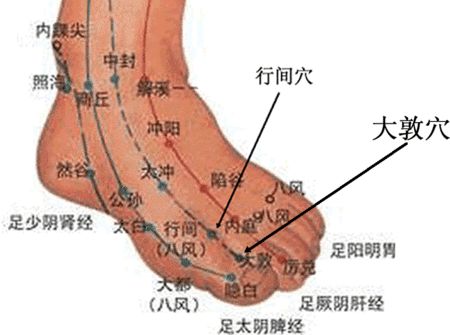
3. Clearing and draining heat toxins—For high fever conditions with qi and blood heat, warm toxin heat invading the blood and causing oral ulcers, sore throat, mumps, carbuncles, and insect bites, points such as Dazhui (Da Zhui), Ge Shu (Ge Shu), Hegu (He Gu), Quchi (Qu Chi), Shixuan (Shi Xuan), jing points, ear apex (or earlobe), as well as points such as Quze (Qu Ze) at the elbow and Weizhong (Wei Zhong) at the popliteal fossa can be heavily drained with fine needles, and bloodletting techniques can be applied to drain the heat toxins from the blood.
4. Draining heat and opening the orifices—When pathogenic heat disturbs the clear orifices, leading to heat closure and unconsciousness (such as heat stroke, stroke closure, pediatric convulsions, or mental disorders due to phlegm obstructing the clear orifices), urgent needling should be performed at points such as Shuigou (Shui Gou), Chengjiang (Cheng Jiang), Yintang (Yin Tang), Baihui (Bai Hui), Shixuan (Shi Xuan), jing points, Hegu (He Gu), and Taichong (Tai Chong), using purging methods or bloodletting to awaken the mind and open the orifices.
5. Needling to drain heat—For local heat conditions caused by stagnation of qi and blood in the meridians, fine needles can be used for dispersive needling, skin needles for tapping, or three-edged needles for pricking local blood vessels to resolve stasis and eliminate heat.
6. Nourishing yin and clearing heat—For conditions of yin deficiency with excessive fire, known as “yin deficiency leading to internal heat,” symptoms include tidal fever, dizziness, dry eyes, dry throat, hoarseness, irritability, and restlessness. Since yin deficiency cannot contain yang, yang qi becomes excessive; or yin deficiency generates fire, leading to fever. Because its essence is deficiency, the treatment should primarily focus on tonifying yin. Key points include those on the hand Taiyin lung meridian, foot Shaoyin kidney meridian, and foot Jueyin liver meridian. Commonly used points include Taixi (Tai Xi), Yongquan (Yong Quan), Zhaohai (Zhao Hai), Rangu (Ran Gu), Yujie (Yu Jie), Chize (Chi Ze), and Gaohuang (Gao Huang). Needling should be performed with even tonification and purging to clear deficiency heat. If there is deficiency fire or excessive yang, purging methods can be used to clear fire and drain heat. When treating yin deficiency, it is important to distinguish the affected organs and treat accordingly. For example, lung yin deficiency often presents with dry cough without phlegm or with little phlegm, hemoptysis, dry throat, hoarseness, and even loss of voice, with red cheeks and tidal fever. Treatment should focus on lung meridian points, supplemented with kidney meridian points to nourish yin, moisten the lungs, and control fire; for heart yin deficiency, symptoms include palpitations, anxiety, irritability, insomnia, forgetfulness, dry mouth, chest tightness, and heart pain, with a red tongue and rapid or intermittent pulse. Treatment should focus on heart and pericardium meridian points, supplemented with kidney meridian points to nourish kidney water and lower heart fire; for liver and kidney yin deficiency, symptoms include dizziness, tinnitus, dry eyes, insomnia, forgetfulness, nocturnal emissions, and irregular menstruation, treatment should focus on liver and kidney meridian points. Additionally, the application of back-shu and front-mu points is also very important. For yin deficiency with fever, generally, even tonification and purging methods are appropriate. However, for deficiency consumption with fever, ancient practitioners often used moxibustion. For example, the moxibustion master Cui Zhitai from the Tang Dynasty was skilled in using moxibustion to treat “pulmonary consumption” and authored the book “Moxibustion for Bone Steaming Disease.” Because “consumption” is a severe deficiency, it not only involves yin deficiency but also weak yang qi, referred to as “both yin and yang are insufficient,” which should be treated with moxibustion. Currently, there are reports of effective moxibustion treatments for pulmonary tuberculosis in various regions. The “Lingshu: Pathogenic Qi and Organ Disease Forms” states, “Needling slowly means shallow insertion and rapid release.” Slow needling refers to heat, and heat leads to a slow pulse. However, no treatment principle is absolute, and the method of shallow and rapid needling for heat diseases is no exception. When heat pathogens enter the interior (i.e., “yin has yang disease”), deep needling and needle retention should be performed, and the “透天凉” complex needling technique can be applied.
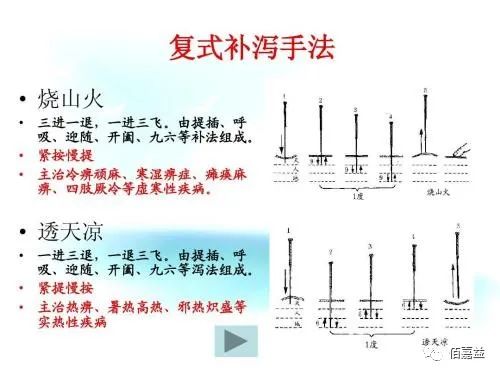 7. Resolving Method
7. Resolving Method
This method involves using acupuncture to invigorate blood circulation, dissolve stasis, reduce swelling, and promote urination to eliminate edema, mainly used for treating muscle and joint sprains, insect bites, urinary difficulties, or urinary retention, and limb edema.
1. Invigorating blood and dissolving stasis—Mainly used for blood excess conditions due to qi stagnation and blood stasis, points such as Hegu (He Gu), Taichong (Tai Chong), Ge Shu (Ge Shu), and Ah Shi points can be selected. Only acupuncture is applied, focusing on purging, and bloodletting is recommended.
2. Promoting urination and reducing swelling—Mainly used for water retention due to poor qi transformation in the three jiaos, urinary difficulties, and painful urination, points such as Zhongji (Zhong Ji), Shuifen (Shui Fen), Shuidao (Shui Dao), Sanyinjiao (San Yin Jiao), Yinlingquan (Yin Ling Quan), Weizhong (Wei Zhong), Weiyang (Wei Yang), Feishu (Fei Shu), Pishu (Pi Shu), and Shenshu (Shen Shu) can be selected. Both acupuncture and moxibustion can be used, focusing on purging.
8. Tonifying Method
The tonifying method uses acupuncture to support the righteous qi, enhance function, and replenish yin, yang, qi, blood, and the deficiencies of the organs. It is suitable for various deficiency conditions. Whether acupuncture has a tonifying effect has been a topic of debate among medical practitioners throughout history. The “Huangdi Neijing” emphasizes achieving deficiency tonification through purging; practitioners like Zhu Danxi (Jin-Yuan) and Wang Ji (Ming Dynasty) believed that acupuncture does not have a tonifying method; Zhang Zihe (Jin-Yuan) believed that acupuncture tonifies deficiency as a result of the removal of pathogens and stabilization of the righteous qi. Clinical practice shows that acupuncture indeed has a therapeutic effect on deficiency. For example, the clinical manifestations of pulmonary tuberculosis are lung deficiency conditions, and after acupuncture tonification of the lungs or treatment according to the method of “nurturing earth to generate metal,” not only do clinical symptoms improve, but the lesions also improve correspondingly. However, compared to excess conditions, deficiency conditions are more challenging to achieve immediate effects. Excess is too much, and reducing excess is relatively easy; deficiency is insufficient, and supplementing insufficiency is more difficult. Therefore, traditional Chinese medicine has long stated, “Purging excess has immediate effects, while tonifying deficiency lacks quick results.” How to tonify deficiency with acupuncture? Based on the methods of tonifying deficiency discussed in the “Huangdi Neijing” and records from various historical texts, combined with clinical practice, the following forms can be summarized:
1. Tonifying the primary meridian—When a specific organ is weak, points on its primary meridian should be selected for tonification. For example, for heart blood deficiency, points on the hand Shaoyin meridian or hand Jueyin meridian should be selected; for lung qi deficiency, points on the hand Taiyin meridian should be selected; for spleen and stomach weakness, points on the foot Taiyin meridian and foot Yangming meridian should be selected. Generally, the source points and back-shu points of the corresponding organs are primarily selected.
2. Tonifying related exterior and interior meridians—Points related to the affected organs should be selected for tonification. For example, the spleen and stomach are interrelated, so spleen deficiency can be supplemented by points on the foot Yangming meridian, and stomach deficiency can be supplemented by points on the foot Taiyin meridian; the liver and gallbladder are interrelated, so liver deficiency can be supplemented by points on the Shaoyang meridian, and gallbladder deficiency can be supplemented by points on the Jueyin meridian. Generally, points on the connecting points, source points, and back-shu points of the related exterior and interior meridians are primarily selected.
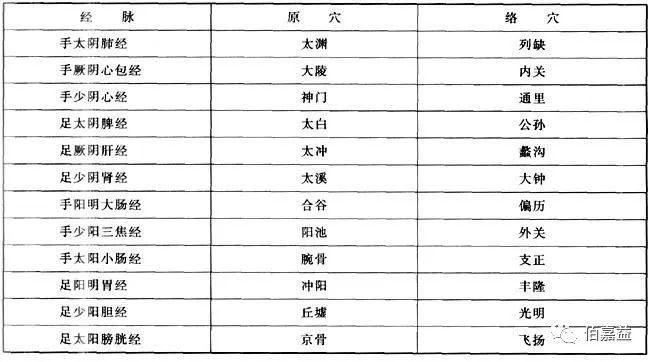 3. Supplementing the mother when deficient—Based on the five-element generating and controlling relationships of the organs, the generating organ is the mother, and the mother can strengthen the child. For example, earth generates metal, the spleen and stomach belong to earth, and the lungs belong to metal. When the lungs are deficient, points on the mother point (Taiyuan) of the earth meridian can be selected for tonification, or points on the spleen and stomach meridians can be selected for tonification, or points belonging to earth (Taibai, Zusanli, mother meridian, mother point) can be selected for tonification. This is a commonly used method of tonifying earth to generate metal in clinical practice. If both methods are applied simultaneously, the tonifying effect is even better.
3. Supplementing the mother when deficient—Based on the five-element generating and controlling relationships of the organs, the generating organ is the mother, and the mother can strengthen the child. For example, earth generates metal, the spleen and stomach belong to earth, and the lungs belong to metal. When the lungs are deficient, points on the mother point (Taiyuan) of the earth meridian can be selected for tonification, or points on the spleen and stomach meridians can be selected for tonification, or points belonging to earth (Taibai, Zusanli, mother meridian, mother point) can be selected for tonification. This is a commonly used method of tonifying earth to generate metal in clinical practice. If both methods are applied simultaneously, the tonifying effect is even better.
4. Stabilizing the innate foundation and tonifying the acquired qi—The functional activities of the organs and meridians depend on both the strength of the innate foundation (liver and kidney) and the balance of the acquired qi (spleen and stomach). Generally, for symptoms of weakness in the organs and meridians, acupuncture treatment can follow the principle of stabilizing the innate foundation and tonifying the acquired qi. Stabilizing the innate foundation of the liver and kidneys ensures strong and unyielding endowments; tonifying the acquired qi of the spleen and stomach ensures a source for the generation of qi and blood. In addition to selecting points on the liver, kidney, spleen, and stomach meridians, the corresponding back-shu points of these four organs, as well as points such as Qihai (Qi Hai), Xuehai (Xue Hai), and Gaohuang (Gao Huang), are all key points for nourishing qi and blood, and the combination of acupuncture and moxibustion has proven to be effective.
The above are all examples of tonifying deficiency. For patients with yang deficiency, qi deficiency, and blood deficiency, as well as yin deficiency without signs of heat, acupuncture combined with tonifying methods is generally used. For blood deficiency and yin deficiency accompanied by deficiency fire or excessive yang, only acupuncture is applied without moxibustion, using even tonification and purging methods. Points on the foot Shaoyin meridian can be selected to nourish kidney water, known as “the master of nourishing water to control yang.” For blood deficiency, points on the heart meridian, pericardium meridian, and points related to blood storage and regulation in the liver, spleen, and stomach meridians can be selected to replenish the source of generation. All these are commonly used methods for tonifying deficiency.
The specific methods of tonifying deficiency in clinical acupuncture mainly include methods for tonifying the heart and lungs (suitable for heart and lung qi deficiency conditions, such as palpitations, shortness of breath, fatigue, spontaneous sweating, and mental fatigue, using points such as Taiyuan (Tai Yuan), Shenmen (Shen Men), Neiguan (Nei Guan), Qihai (Qi Hai), Feishu (Fei Shu), and Zusanli (Zu San Li), with both acupuncture and moxibustion applied), methods for tonifying the heart and spleen (suitable for heart and spleen deficiency conditions, such as anemia, pale complexion, palpitations, insomnia, excessive dreaming, and forgetfulness, using points such as Shenmen (Shen Men), Neiguan (Nei Guan), Taibai (Tai Bai), Sanyinjiao (San Yin Jiao), Feishu (Fei Shu), and Zusanli (Zu San Li), with both acupuncture and moxibustion applied), methods for tonifying the middle and benefiting qi (suitable for conditions of middle qi deficiency and qi sinking, such as poor appetite, shortness of breath, fatigue, chronic diarrhea, nocturnal enuresis, excessive menstruation, metrorrhagia, prolapse of the rectum, uterine prolapse, and organ prolapse, using points such as Zhongwan (Zhong Wan), Qihai (Qi Hai), Baihui (Bai Hui), Feishu (Fei Shu), Weishu (Wei Shu), and Zusanli (Zu San Li), with both acupuncture and moxibustion applied, with a focus on moxibustion), methods for lifting yang and stabilizing collapse (suitable for conditions of qi deficiency sinking and sudden loss of yang, such as rectal prolapse, uterine prolapse, organ prolapse, nocturnal enuresis, chronic diarrhea, cold limbs, pale complexion, low blood pressure, and weak pulse, using points such as Baihui (Bai Hui), Qihai (Qi Hai), Guanyuan (Guan Yuan), Shenque (Shen Que), Suliang (Su Liang), Shuigou (Shui Gou), and Zusanli (Zu San Li), with both acupuncture and moxibustion applied, with a focus on moxibustion), and methods for nourishing the liver and kidneys (suitable for liver and kidney deficiency conditions, such as dizziness, tinnitus, dry eyes, blurred vision, weakness in the lower back and knees, nocturnal emissions, impotence, and irregular menstruation, using points such as Taichong (Tai Chong), Taixi (Tai Xi), Sanyinjiao (San Yin Jiao), Guanyuan (Guan Yuan), Mingmen (Ming Men), and Shenshu (Shen Shu), with both acupuncture and moxibustion applied), and methods for tonifying both qi and blood (suitable for conditions of both qi and blood deficiency, such as mental fatigue, pale complexion, dizziness, palpitations, shortness of breath, insomnia, excessive dreaming, and irregular menstruation, using points such as Qihai (Qi Hai), Baihui (Bai Hui), Taiyuan (Tai Yuan), Neiguan (Nei Guan), Xuehai (Xue Hai), Sanyinjiao (San Yin Jiao), Zusanli (Zu San Li), Feishu (Fei Shu), Pishu (Pi Shu), and Shenshu (Shen Shu), with both acupuncture and moxibustion applied).
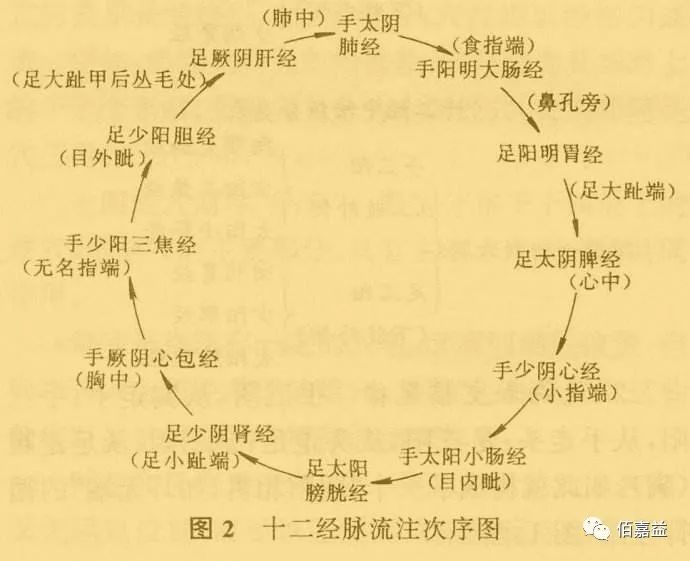 【The images in the text are sourced from the internet. If there is any infringement, please contact us for removal】
【The images in the text are sourced from the internet. If there is any infringement, please contact us for removal】
Inheritance
tExchange
tLearning
tSharing: Feel free to contact us at Email: [email protected], Learning website: www.baiguojiayi.com
